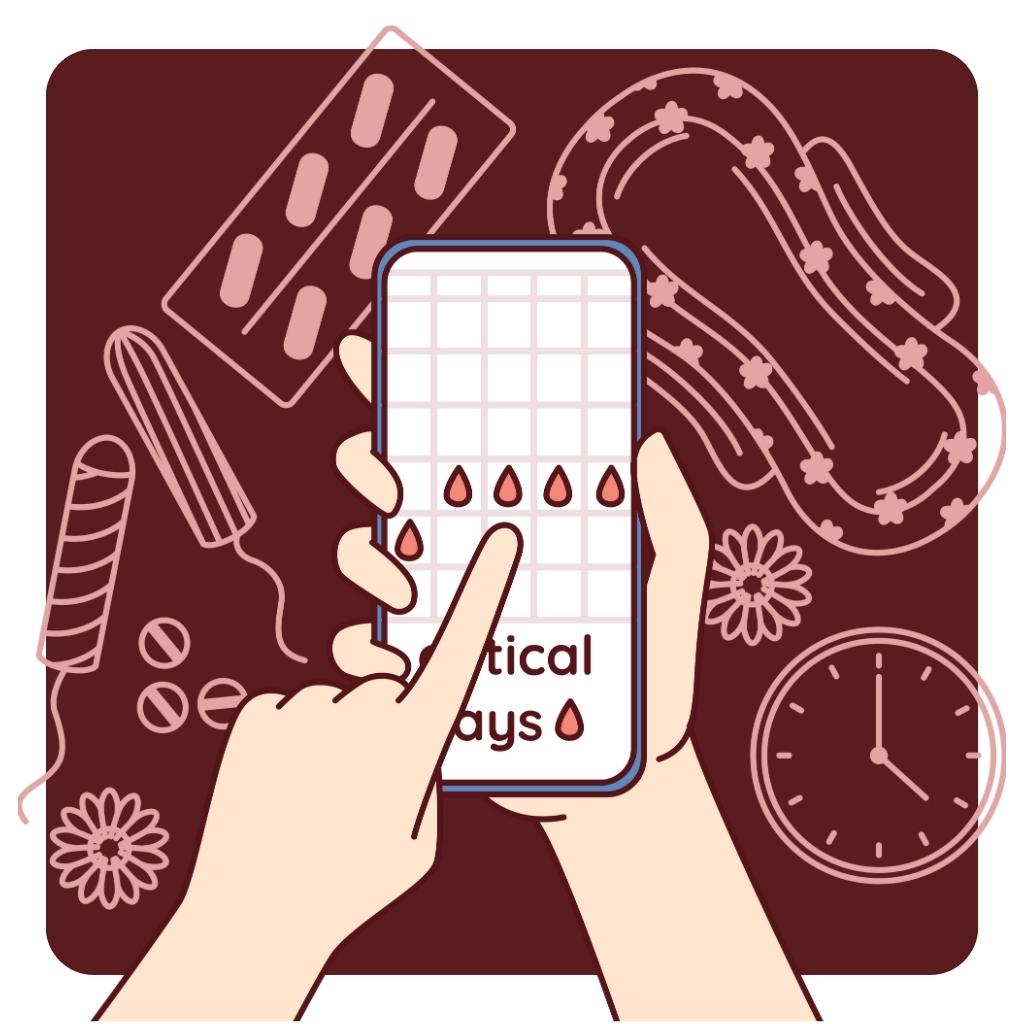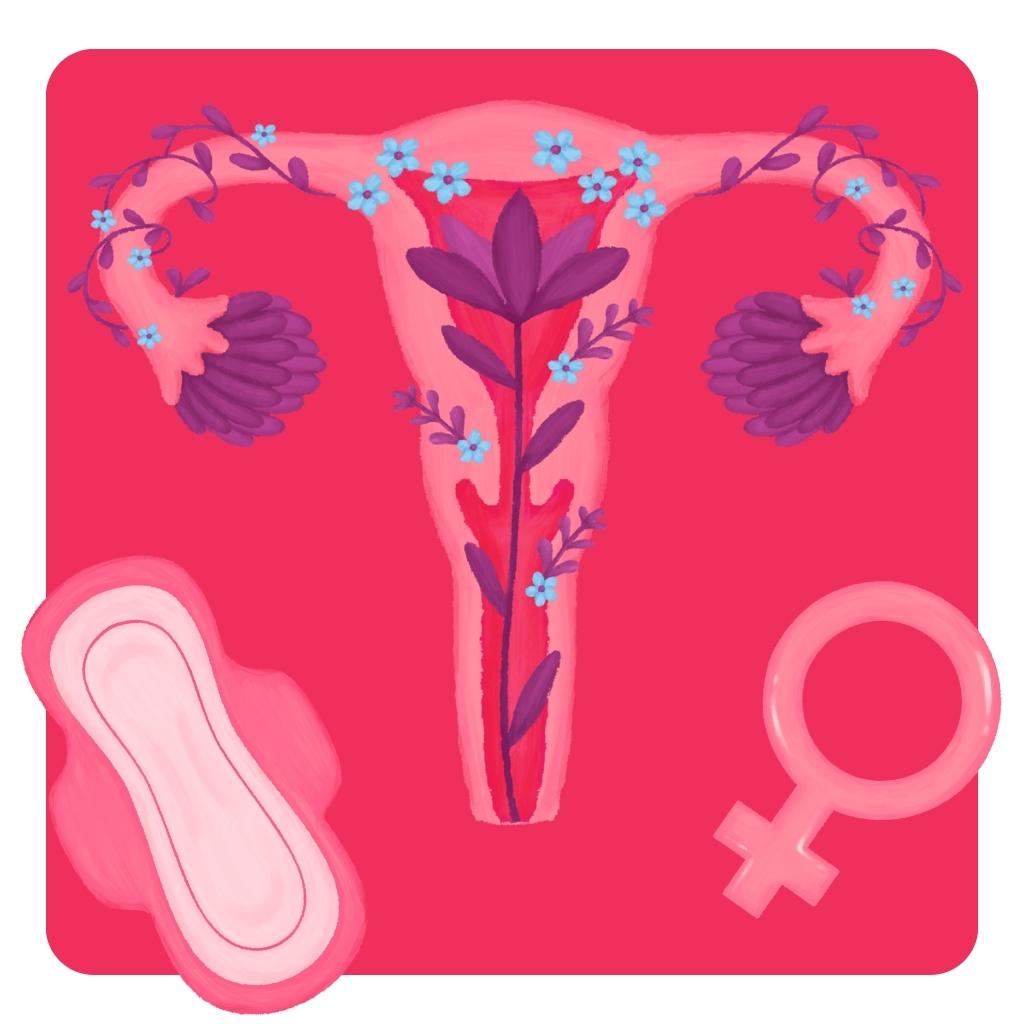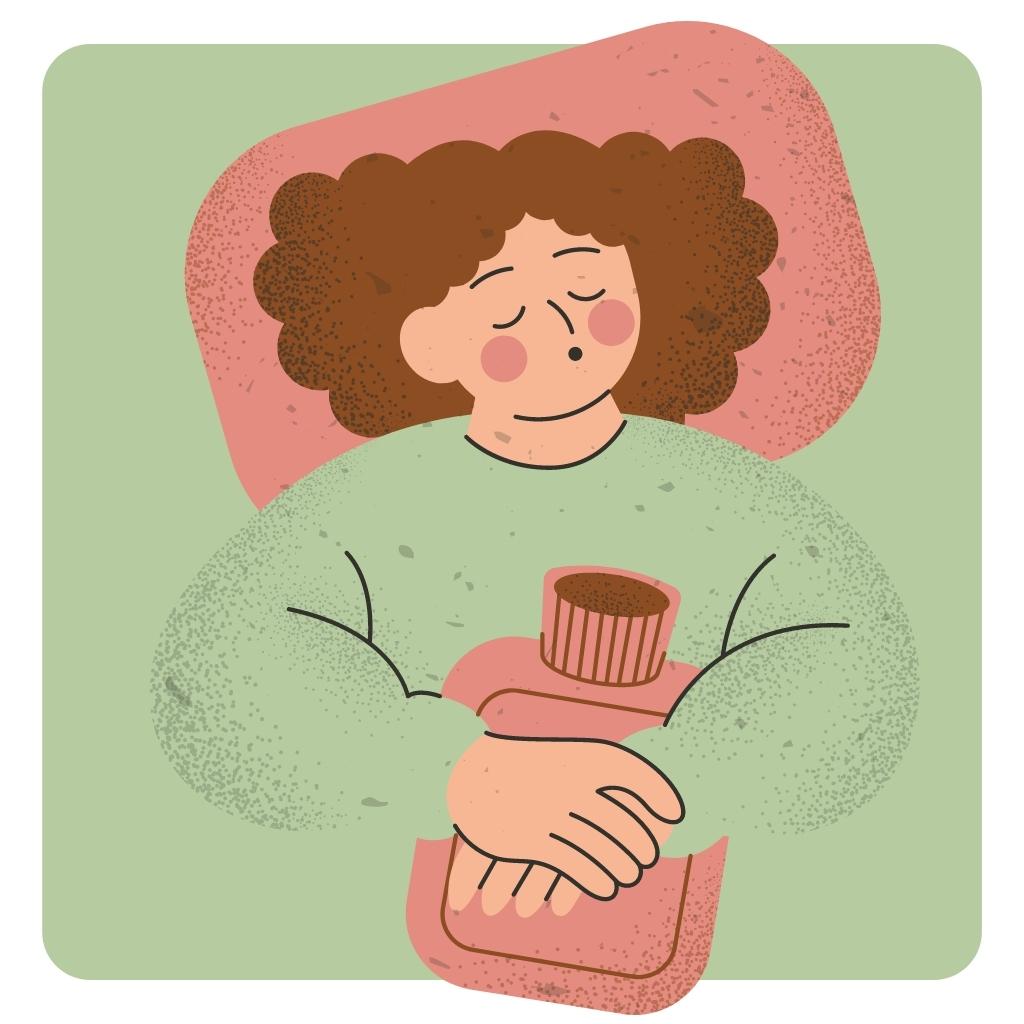PMS vs Period: Understanding the Differences and Managing Symptoms

Premenstrual Syndrome (PMS) and menstruation, also known as the period, are two distinct but interconnected aspects of a woman’s reproductive health. Understanding the difference between PMS vs. period is crucial for both women and healthcare providers to ensure accurate diagnosis and appropriate management.
In this article, we will explore the definitions of PMS and menstruation, highlighting their unique characteristics and the importance of differentiating between them.
What is PMS?
Premenstrual Syndrome (PMS) refers to a cluster of physical and emotional symptoms that occur in the days or weeks leading up to menstruation. These symptoms can vary widely among individuals but commonly include mood swings, irritability, bloating, breast tenderness, fatigue, and food cravings. According to a study published in the Journal of Women’s Health, approximately 75% of menstruating women experience at least one symptom of PMS during their reproductive years (Bertone-Johnson et al., 2015).

What is Period?

Menstruation, often referred to as the period, is the shedding of the uterine lining that occurs approximately once a month in women of reproductive age. This natural process is regulated by hormonal fluctuations and typically lasts around 3 to 7 days. Menstruation is characterized by the discharge of blood and tissue from the uterus through the vagina. It plays a vital role in the reproductive cycle, preparing the body for potential pregnancy if fertilization occurs.
| Related: How Fruits Can Soothe Your Menstrual Cramps
Importance of Understanding the Difference Between PMS and Period
Understanding the difference between PMS and the period is crucial for several reasons. Firstly, it allows individuals to differentiate between normal menstrual symptoms and those associated with PMS. This knowledge can help women identify when their symptoms may be indicative of a more significant underlying issue, such as premenstrual dysphoric disorder (PMDD) or hormonal imbalances. Additionally, accurately identifying and diagnosing PMS enables healthcare providers to develop appropriate treatment plans tailored to the individual’s needs.
By differentiating between PMS and the period, women can gain a better understanding of their bodies, leading to improved self-care and quality of life. Furthermore, dispelling misconceptions and promoting accurate knowledge about these topics helps reduce stigma and encourages open conversations surrounding menstruation and women’s health.
Distinguish PMS from pregnancy symptoms with our comprehensive guide!
Understand the key differences and gain clarity:
Understanding PMS
Premenstrual Syndrome (PMS) is a collection of physical and emotional symptoms that occur in the days or weeks leading up to menstruation. The American College of Obstetricians and Gynecologists defines PMS as a recurrent pattern of symptoms that start during the luteal phase of the menstrual cycle and resolve within a few days of the onset of menstruation (ACOG, 2018).

Common Physical and Emotional Symptoms
PMS manifests through a range of physical and emotional symptoms, which can vary in intensity and duration among individuals. Physical symptoms commonly associated with PMS include bloating, breast tenderness, fatigue, headaches, joint or muscle pain, and changes in appetite or food cravings. Emotional symptoms can include mood swings, irritability, anxiety, depression, and difficulty concentrating.
A study published in the Journal of Women’s Health examined the prevalence and severity of PMS symptoms in a large cohort of women. The results showed that the most common physical symptoms were bloating (85.4%), breast tenderness (82.1%), and fatigue (80.4%), while emotional symptoms included irritability (90.9%), mood swings (88.6%), and anxiety (80.6%) (Bertone-Johnson et al., 2015).
| Discover: Uncommon PMS Symptoms
Prevalence and Duration of PMS
PMS is a prevalent condition that affects a significant number of menstruating women. According to a study published in the Journal of Clinical Psychiatry, it is estimated that around 20-40% of women experience moderate to severe symptoms of PMS (Epperson et al., 2012). These symptoms typically occur in the week or two preceding menstruation and subside shortly after the onset of the period.
Factors that Contribute to PMS
The exact cause of PMS remains unclear, but several factors are believed to contribute to its development. Hormonal fluctuations, particularly changes in estrogen and progesterone levels during the menstrual cycle, are thought to play a significant role. Additionally, neurotransmitters such as serotonin, which regulates mood, may be involved in PMS symptoms.
A review published in the Journal of Psychosomatic Obstetrics and Gynecology suggested that the sensitivity of the central nervous system to hormonal changes, individual variations in neurotransmitter functioning, and psychosocial factors, such as stress and lifestyle, may contribute to the development and severity of PMS symptoms (Rapkin, 2014).
| Suggestion: PMS Constipation | Is Constipation a Symptom of PMS?
Understanding the definition, symptoms, prevalence, and contributing factors of PMS provides a solid foundation for differentiating it from the menstrual period. In the next section, we will explore the characteristics of menstruation and its distinct features compared to PMS.
Understanding the Period
Menstruation, commonly referred to as the period, is a natural physiological process unique to individuals with a female reproductive system. It involves the cyclic shedding of the uterine lining, consisting of blood and tissue, which occurs approximately once a month. The primary purpose of menstruation is to prepare the uterus for potential pregnancy.
During each menstrual cycle, if fertilization of an egg does not occur, the uterus undergoes a series of hormonal changes. The lining of the uterus, known as the endometrium, thickens in preparation for the implantation of a fertilized egg. When fertilization does not occur, the hormonal signals shift, leading to the shedding of the endometrium and its subsequent expulsion from the body through the vagina.
| Read more: Menstrual Cramps vs. Pregnancy Cramps

What is the Menstrual Cycle?
The menstrual cycle refers to the regular, cyclical changes that occur in the female reproductive system, preparing it for a possible pregnancy. The cycle is typically counted from the first day of one period to the first day of the next. The average length of a menstrual cycle is around 28 days, although variations are common and can range from 21 to 35 days.
The menstrual cycle consists of different phases, including the menstrual phase, follicular phase, ovulation, and luteal phase. The menstrual phase marks the start of the cycle, characterized by the shedding of the uterine lining. The follicular phase follows, during which follicles in the ovaries mature, preparing to release an egg. Ovulation occurs when a mature egg is released from the ovary, ready for potential fertilization. The luteal phase is the final phase, where the uterus prepares for implantation or the shedding of the endometrium if fertilization does not occur.
Typical Length and Characteristics of a Period
The length and characteristics of a period can vary among individuals. On average, a period lasts around 3 to 7 days, with the heaviest bleeding occurring during the first few days. The flow can range from light to heavy, with variations in color and consistency. It is common for individuals to experience mild discomfort or cramping during their period.
According to a study published in the journal Obstetrics and Gynecology, the average duration of menstrual bleeding is 5.2 days, with a median blood loss of 30 milliliters (Farquhar et al., 2019). However, it is important to note that these figures are averages, and individual experiences may differ.
| Learn more: PMDD vs. PMS, What Is The Difference?
Factors that Can Affect the Menstrual Cycle
Various factors can influence the regularity and characteristics of the menstrual cycle. Hormonal imbalances, stress, changes in weight or exercise patterns, certain medical conditions, and the use of certain medications or contraceptives can affect the timing and intensity of periods.
A study published in the Journal of Clinical Endocrinology and Metabolism highlighted the influence of body mass index (BMI) on menstrual cycle characteristics. The research found that both low and high BMI were associated with menstrual irregularities, emphasizing the importance of maintaining a healthy weight for optimal menstrual health (Hart et al., 2011).
Understanding the definition, purpose, cycle, and factors influencing menstruation provides a comprehensive understanding of this crucial aspect of reproductive health. In the next section, we will delve into the key differences between PMS and the period, helping to clarify any misconceptions and establish a clear distinction.
PMS vs. Period
It is essential to clarify a common misconception: PMS is not synonymous with having a period. PMS refers specifically to the collection of symptoms that occur before menstruation, while the period refers to the menstrual bleeding itself. PMS is a premenstrual condition that occurs during the luteal phase of the menstrual cycle, while the period marks the shedding of the uterine lining.

PMS vs. Period – Timing
One key factor in distinguishing PMS from the period is the timing of symptoms. PMS symptoms typically occur in a week or two leading up to menstruation and tend to subside within a few days after the period starts. Understanding this timing helps differentiate between symptoms related to the menstrual cycle and those specifically associated with PMS.
PMS vs. Period Symptoms
Another important aspect of differentiating PMS from the period is recognizing the specific symptoms associated with each. Physical symptoms commonly associated with the period include abdominal cramping, back pain, and fatigue, which are directly related to the process of menstruation itself. On the other hand, PMS symptoms encompass a broader range of physical and emotional manifestations, as discussed earlier.
A study published in the Archives of Women’s Mental Health investigated the differentiation of PMS and menstrual symptoms among a sample of women. The findings indicated that symptoms such as bloating, breast tenderness, and mood swings were more strongly associated with PMS, while symptoms like abdominal cramping and headache were more closely related to menstruation (Woods et al., 2016).
Do you experience night sweats during PMS?
Read our comprehensive guide, The Connection Between Night Sweats and PMS, to gain valuable information!
PMS without a Period
It is worth noting that PMS can occur even in the absence of a menstrual period. Some women experience symptoms of PMS, including mood changes and physical discomfort, despite not having regular menstrual bleeding. This can happen due to hormonal imbalances or conditions such as polycystic ovary syndrome (PCOS). Therefore, it is essential to consider PMS as a distinct condition that can occur independently of the menstrual period.
By clarifying misconceptions, considering the timing of symptoms, differentiating physical and emotional manifestations, and acknowledging that PMS can occur without menstruation, individuals and healthcare providers can gain a better understanding of these two interconnected but separate aspects of a woman’s reproductive health.
Strategies for Managing PMS Symptoms
Managing PMS symptoms effectively requires a multifaceted approach. Several strategies can help alleviate the physical and emotional manifestations of PMS. One common approach is maintaining a healthy lifestyle, which includes regular exercise, balanced nutrition, and adequate sleep. Engaging in physical activity has been shown to reduce PMS symptoms by releasing endorphins and improving overall well-being.

Lifestyle Changes that May Alleviate PMS Symptoms
Certain lifestyle changes have been associated with a reduction in PMS symptoms. For instance, limiting caffeine and alcohol intake may help minimize irritability and mood swings. Increasing the consumption of complex carbohydrates, such as whole grains and vegetables, while reducing salt and sugar intake, can also be beneficial.
Scientific evidence suggests that dietary changes can have a positive impact on PMS symptoms. A study published in the American Journal of Clinical Nutrition reported that a diet high in fruits, vegetables, and whole grains was associated with a lower risk of developing PMS symptoms (Chocano-Bedoya et al., 2011).
Medical Interventions and Therapies for Severe PMS
In cases where PMS symptoms are severe and significantly interfere with daily functioning, medical interventions may be necessary. Medications such as selective serotonin reuptake inhibitors (SSRIs) or hormonal contraceptives may be prescribed to help regulate mood and hormonal fluctuations. These interventions should be discussed with a healthcare provider, who can determine the most appropriate course of treatment based on individual needs.
In addition to medication, certain therapies have been found to be effective in managing severe PMS symptoms. Cognitive-behavioral therapy (CBT) can help individuals develop coping strategies and challenge negative thoughts and behaviors associated with PMS. Other alternative therapies, such as acupuncture or relaxation techniques, may also provide relief for some individuals.
| Suggestion: PMS and Vitamins | What is the Best Vitamin to Take for PMS?
Coping Mechanisms During the Menstrual Period
While the period itself is a natural process, it can still be accompanied by discomfort and inconvenience. Employing coping mechanisms during this time can help alleviate symptoms and improve overall well-being. Applying a heating pad or taking over-the-counter pain relievers, with the guidance of a healthcare provider, can provide relief from menstrual cramps. Engaging in relaxation techniques, such as deep breathing exercises or mindfulness meditation, can also help manage stress and promote relaxation during the period.
Furthermore, tracking menstrual symptoms and keeping a menstrual diary can assist in identifying patterns and predicting the onset of PMS symptoms. This self-awareness allows individuals to anticipate and better manage the physical and emotional changes associated with their menstrual cycle.
By adopting strategies for managing PMS symptoms, making lifestyle changes, considering medical interventions when necessary, and implementing coping mechanisms during the menstrual period, individuals can take proactive steps toward minimizing the impact of PMS on their daily lives.
HealWiser’s Last Piece of Advice
It is crucial to differentiate between PMS vs period to ensure an accurate understanding and appropriate management of these two distinct aspects of a woman’s reproductive health. Knowledge is key in breaking down stigmas surrounding menstruation and promoting open conversations about women’s health. By educating ourselves and others, we can create a supportive environment that encourages discussions about PMS, the period, and the unique experiences women go through.
Share your experience with Heal Wiser and others in the comments section below this post.






